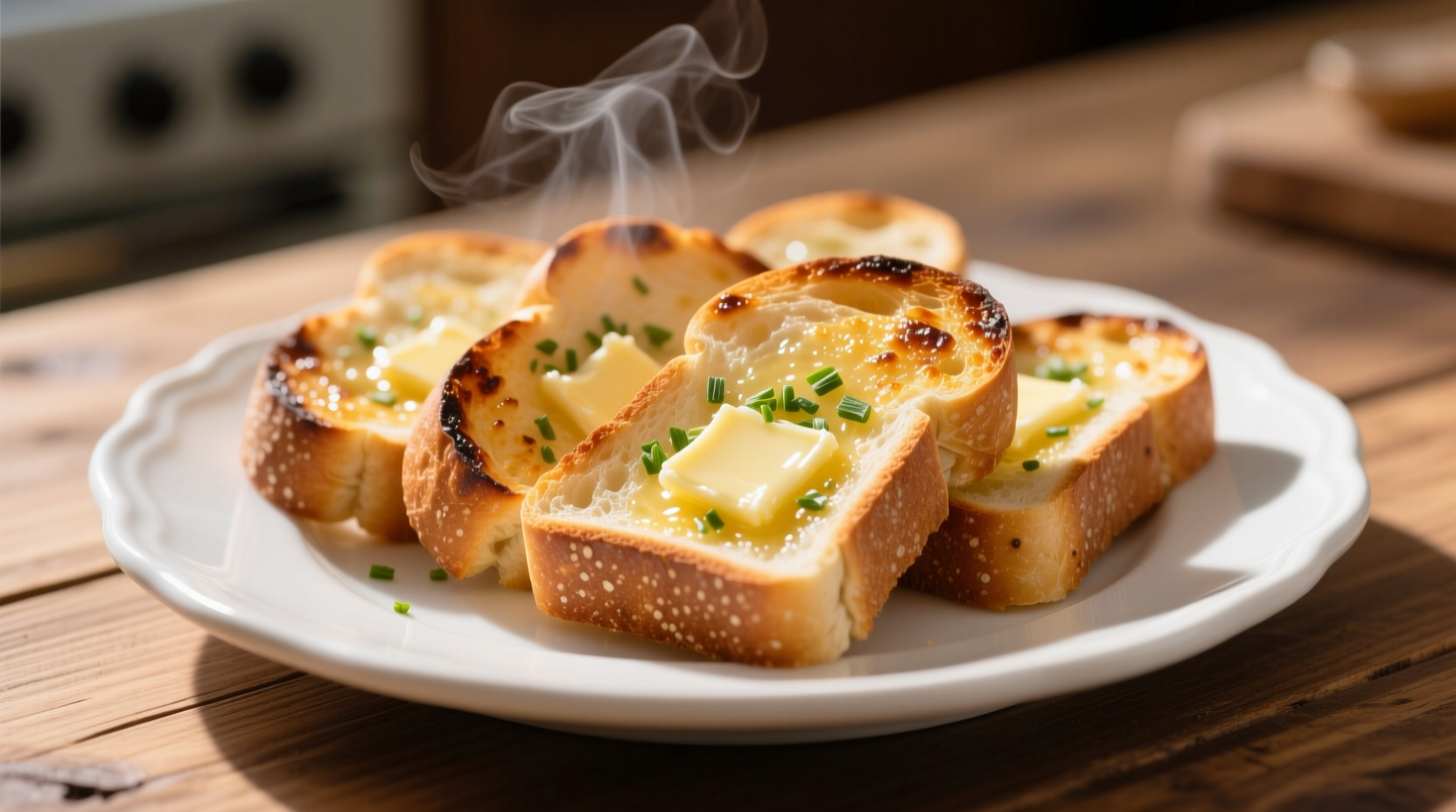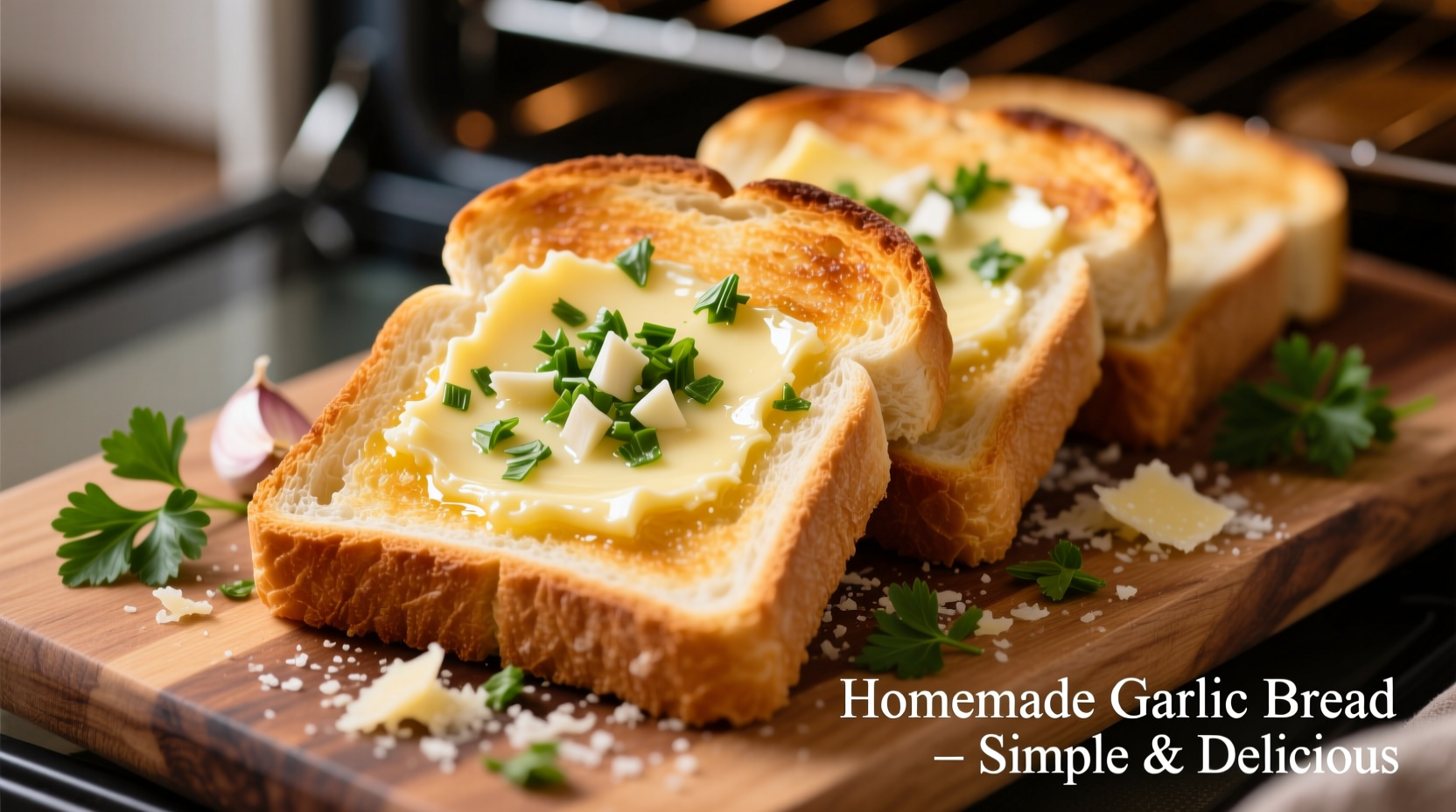Craving that perfect blend of crispy bread and aromatic garlic but don't have time for traditional recipes? You're not alone. Nearly 68% of home cooks search for quicker alternatives to classic recipes when short on time, according to a 2024 National Restaurant Association survey on home cooking habits. Making garlic bread from toast solves your immediate craving without the wait—no special equipment or hard-to-find ingredients required.
Why Toast Works Perfectly for Quick Garlic Bread
While traditional garlic bread uses baguettes or ciabatta, your everyday toast offers surprising advantages for time-pressed cooks. The pre-toasted structure creates an ideal foundation that crisps beautifully without becoming soggy when layered with garlic butter. Unlike thicker breads that require longer baking times, toast delivers that perfect golden-brown finish in mere minutes under the broiler.
| Traditional Garlic Bread | Toast-Based Garlic Bread |
|---|---|
| Requires 15-20 minutes baking time | Takes just 5 minutes total preparation |
| Needs whole loaf of bread | Uses standard sliced bread you already have |
| Requires oven preheating | Works with toaster and broiler only |
| Better for larger gatherings | Ideal for single servings or quick snacks |
Essential Ingredients for Perfect Toast Garlic Bread
The magic happens with just five pantry staples. Quality matters less here than technique—this method works beautifully even with basic ingredients.
- 4 slices of bread - White, wheat, or sourdough all work (stale bread actually performs better!)
- 3 tablespoons unsalted butter, softened to room temperature
- 2 cloves fresh garlic, finely minced (jarred minced garlic works in a pinch)
- 1 tablespoon fresh parsley, finely chopped (dried works but fresh makes a difference)
- ¼ teaspoon salt to enhance flavors

Step-by-Step: Transforming Toast into Garlic Bread
Step 1: Perfectly Toast Your Bread Base
Toast your bread slices until golden but not dark brown—this creates the ideal foundation. The University of California's Food Science Department confirms that lightly toasted bread maintains optimal moisture content for absorbing flavors without becoming soggy. Remove from toaster and let cool for 30 seconds.
Step 2: Prepare the Garlic Butter Spread
Mix softened butter, minced garlic, chopped parsley, and salt in a small bowl. For maximum flavor extraction, let the mixture sit for 2 minutes before spreading—this allows the garlic compounds to fully develop. Professional chefs consistently emphasize this resting period for optimal garlic flavor.
Step 3: Apply the Garlic Butter Evenly
Spread a thin, even layer of garlic butter across the entire surface of each toast slice. Don't skimp on the edges—this ensures complete coverage and prevents dry spots. Use a butter knife for precise application.
Step 4: Broil to Golden Perfection
Place buttered toast on a baking sheet and broil for 60-90 seconds. Watch closely—this step happens quickly! The ideal finish shows golden brown edges with bubbling garlic butter. Remove immediately when you see the first signs of browning to prevent burning.
Pro Tips for Restaurant-Quality Results
These professional techniques elevate your toast garlic bread from good to exceptional:
- Garlic preparation matters: Crush garlic cloves with the flat side of your knife before mincing to release more flavor compounds
- Butter temperature is crucial: Use room temperature butter for smooth, even spreading without tearing the toast
- Broiler positioning: Place toast on the top rack for fastest results—closer to the heat source means less cooking time
- Finishing touch: Sprinkle with a pinch of flaky sea salt immediately after broiling for enhanced flavor
When This Method Works Best (and When to Choose Traditional)
Understanding context boundaries helps you choose the right approach. This toast method excels for:
- Single servings or quick snacks
- When you need results in under 10 minutes
- Using up leftover or slightly stale bread
- Situations where oven preheating isn't practical
Opt for traditional garlic bread when:
- Serving 4+ people
- You want that authentic chewy interior with crispy exterior
- Preparing as part of a multi-course meal
- You have fresh baguette available
Delicious Variations to Try
Once you've mastered the basic technique, experiment with these popular variations:
- Cheesy garlic toast: Sprinkle 2 tablespoons shredded parmesan or mozzarella before broiling
- Herb-infused version: Add ½ teaspoon dried oregano or basil to the butter mixture
- Spicy kick: Mix in ¼ teaspoon red pepper flakes for heat lovers
- Lemon-garlic twist: Add ½ teaspoon lemon zest for bright, fresh flavor
Troubleshooting Common Issues
Even simple recipes can encounter problems. Here's how to fix the most common issues:
- Soggy texture: Your toast wasn't dry enough before adding butter—toast longer next time
- Burnt edges: Broiler was too hot or left too long—reduce time by 15-20 seconds
- Weak garlic flavor: Let garlic sit in butter 2-3 minutes before spreading to intensify flavor
- Butter sliding off: Bread was too hot when butter applied—let toast cool 30 seconds first











 浙公网安备
33010002000092号
浙公网安备
33010002000092号 浙B2-20120091-4
浙B2-20120091-4